Once upon a time, a kid with a tree branch and a rubber band became king of the backyard. Fast forward a few thousand years and a shepherd named David drops a literal giant with a sling and a stone. Whether you’re 12 and shirtless in July or a grown adult in cargo pants evaluating survival tools, one truth remains: the slingshot is more than a toy. It’s a symbol of defiance, simplicity, and smart physics.
Let’s talk slingshots—not the cheap ones collecting dust at the gas station, but the real deal. We’re talking about five contenders here:
But first, let’s pay respect to the roots of this ancient projectile thrower.
David and Goliath: The Original Underdog Weapon
Before we had carbon fiber frames and laser sights, we had shepherds with slings. And one of them, a young guy named David, took down a Philistine tank of a man named Goliath with nothing but a smooth stone and an outrageous amount of faith.
Historians and ballistics experts agree: David’s sling wasn’t some novelty weapon. That thing could hurl a rock at speeds rivaling a handgun. The man brought a rock to a sword fight—and won. That kind of poetic imbalance lives on in every modern slingshot.
From Shepherds to Suburbia: A Brief History
The slingshot as we know it didn’t show up until vulcanized rubber entered the scene in the 1800s. Before that, people used primitive slings—essentially a pouch with cords—to launch rocks over long distances.
Then some genius figured out that if you tie rubber tubing to a forked stick, you’ve got yourself a pocket-sized cannon. From there, slingshots became the stuff of American mischief, military experimentation, and yes, legitimate hunting.
The Uncle, the Tree Branch, and the Backyard Arms Race
Let’s rewind to a summer afternoon. You’re ten. Your uncle, the kind of guy who smells like sawdust and keeps a multitool in every pocket, whittles a Y-shaped branch and carves your name into it. He ties on some heavy-duty rubber bands from the garage. It’s your first real slingshot. You shoot soda cans. Then fence posts. Then maybe, one ill-fated squirrel.
There’s something primal about holding a slingshot. It’s DIY warfare, scaled down and personal. You feel like David with every shot.
Modern Use: Why Slinging Still Matters
Slingshots aren’t just nostalgia-fueled backyard relics. These days, they’re serious tools in the world of:
- Small game hunting
- Survival prepping
- EDC (Everyday Carry) kits
- Tactical training
- Recreational marksmanship
You can take out a rabbit, a rat, or a rogue tin can with precision if you’ve got the right setup. And it’s quiet—no gunpowder, no bang. Just the whisper of rubber and the snap of impact.
Slingshot Showdown: 5 Contenders, 5 Styles of Mayhem
Let’s break down these modern slingers, from refined to feral.
1. Axiom Ocularus
The Axiom Ocularus is the slingshot equivalent of a bespoke suit that can still take a punch. It’s built with speed, customization, and ergonomics in mind. You can swap bands fast thanks to the Ocularis plug system, and the grip just melts into your hand.
Pros:
- Excellent for high-speed shooting
- Quick band changes
- Comfortable for long sessions
Cons:
- Slightly more technical—better for intermediate to advanced users
If you want a slingshot that feels like it was engineered by a former NASA scientist who hunts squirrels on weekends, this is your ride.
2. Scout XT
The Scout XT is the dependable workhorse of the lineup. Rugged, modular, and built like it wants to live in your bug-out bag, it’s got finger grooves, band options galore, and a following of loyalists who treat it like a survival tool.
Pros:
- Incredibly versatile
- Fits a wide range of band types
- Feels solid and reliable
Cons:
- A bit bulkier than others
This one’s for the prepper who already has paracord bracelets and knows the caloric yield of squirrel meat.
3. Scout LT2
Think of this as the Scout XT’s sleeker cousin. The LT2 is lighter, stripped down, and faster in the hand. It sacrifices some of the XT’s tank-like bulk for better maneuverability.
Pros:
- Light and nimble
- Comfortable grip
- Still modular and easy to set up
Cons:
- Not quite as stable with heavy bands
Great for EDC sling shooters or anyone who wants a low-profile option that doesn’t skimp on power.
4. Axiom
A classic in the SimpleShot family, this version leans minimalist. No frills, just pure, elegant design. Great for instinctive shooting. If you’re a purist, this is your slingshot.
Pros:
- Compact and simple
- Great for target shooting
- Feels old-school in a good way
Cons:
- Not as many grip or band options
It’s the acoustic guitar of slingshots—pure, no effects, but with the right hands, deadly.
5. DADONFANG Professional Slingshot Set
Alright, here’s the wild card. This thing looks like it came from a movie where a mechanic fights off mutants in a junkyard. Made of steel, comes with laser sights, flashlight mounts, and enough extras to make a Swiss Army knife blush.
Pros:
- All the extras (lasers, mounts, tools)
- Heavy-duty metal frame
- Affordable for the package
Cons:
- Overkill for casual use
- Lasers aren’t always allowed in competition or hunting
If you want to feel like you’re gearing up for a post-apocalyptic standoff, this one’s for you. Just know it’s less about finesse and more about flair.
Rubber Meets the Road: Band Materials 101
The power behind the projectile comes from the bands, and not all bands are created equal.
- Flat Bands: Faster release, better energy transfer, great for speed shooting. They wear out faster.
- Tube Bands: More durable, easier to find replacements for, slightly slower but reliable.
- Latex Quality: Cheap latex cracks and dies quickly. Good latex (like SimpleShot’s proprietary stuff) lasts longer and shoots truer.
Choosing the right band is like choosing tires for your car. Are you racing? Off-roading? Cruising to the store? Match the band to your style.
Ammo Matters: What You Fire Says Everything
Just like bands, your ammo makes a difference:
- Steel Balls: Classic. Reliable. Deadly. Great for consistent accuracy.
- Clay Ammo: Biodegradable and safer for casual or urban slinging.
- Lead Balls: Heavy hitters. Not eco-friendly, but they pack a punch.
- Marbles: Fun and cheap, but they shatter on impact and aren’t very consistent.
- Stones: Channel your inner David. Unpredictable but satisfying.
Pro tip: Steel 3/8″ or 7/16″ balls strike a great balance between power and accuracy for most modern slingshots.
Final Thoughts: What to Sling, and When
If you’re looking for precision and elegance, the Axiom Ocularus is your Excalibur. If you want a durable do-it-all beast, go with the Scout XT. If you prefer something sleek and low-key, the LT2 is your move. Purists will love the SimpleShot Axiom, while the DADONFANG gives you that Mad Max feeling on a budget.
But honestly? They’re all fun. They’re all capable. And they all take you back to something ancient, instinctive, and oddly peaceful.
Just like David in the valley, facing down his giant, the slingshot is a reminder: you don’t need to be the biggest or loudest. You just need to aim true.
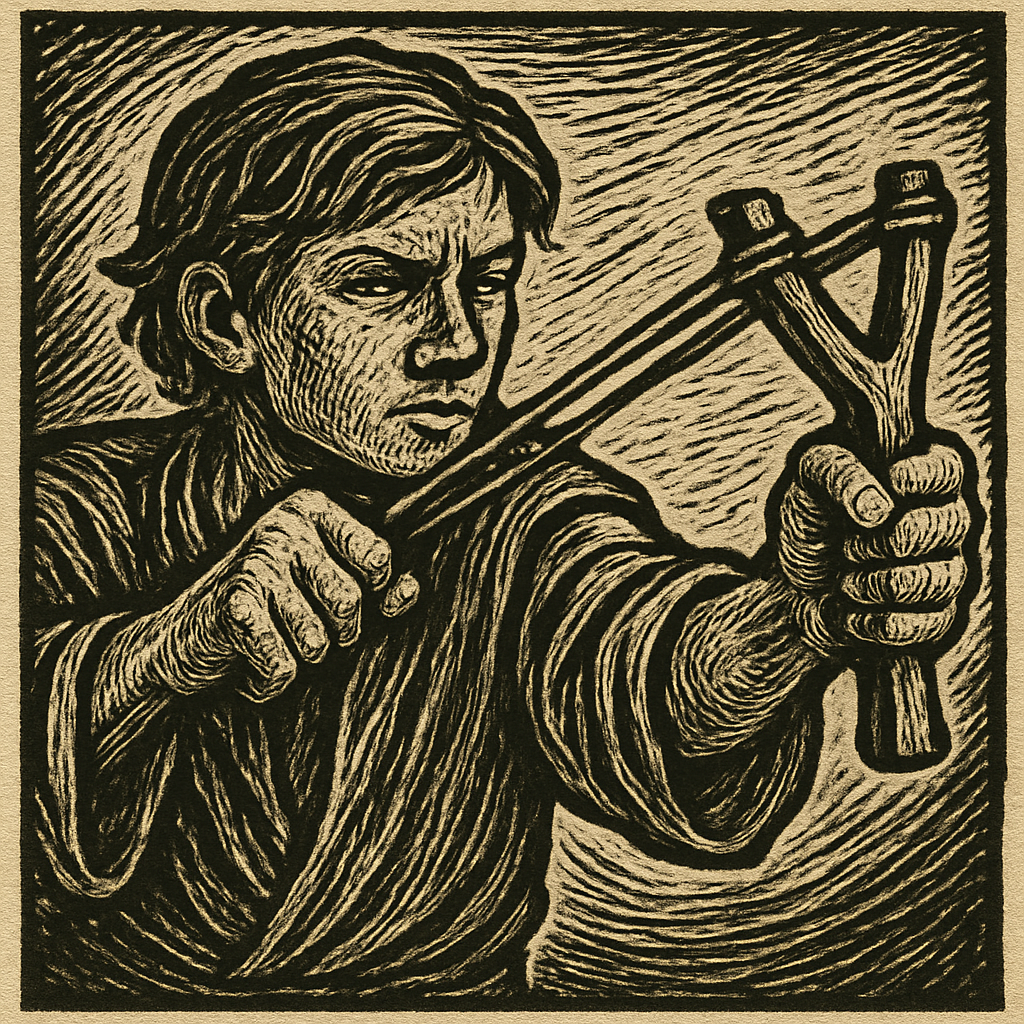
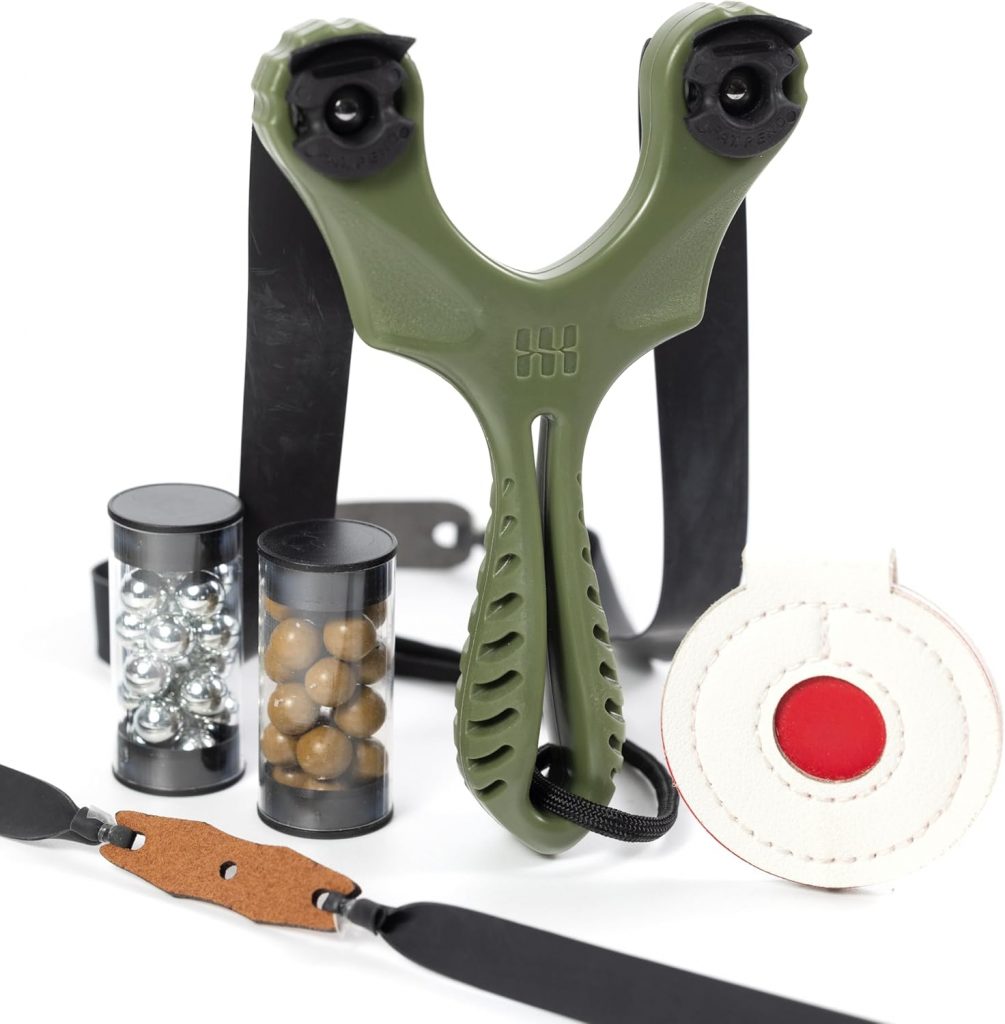
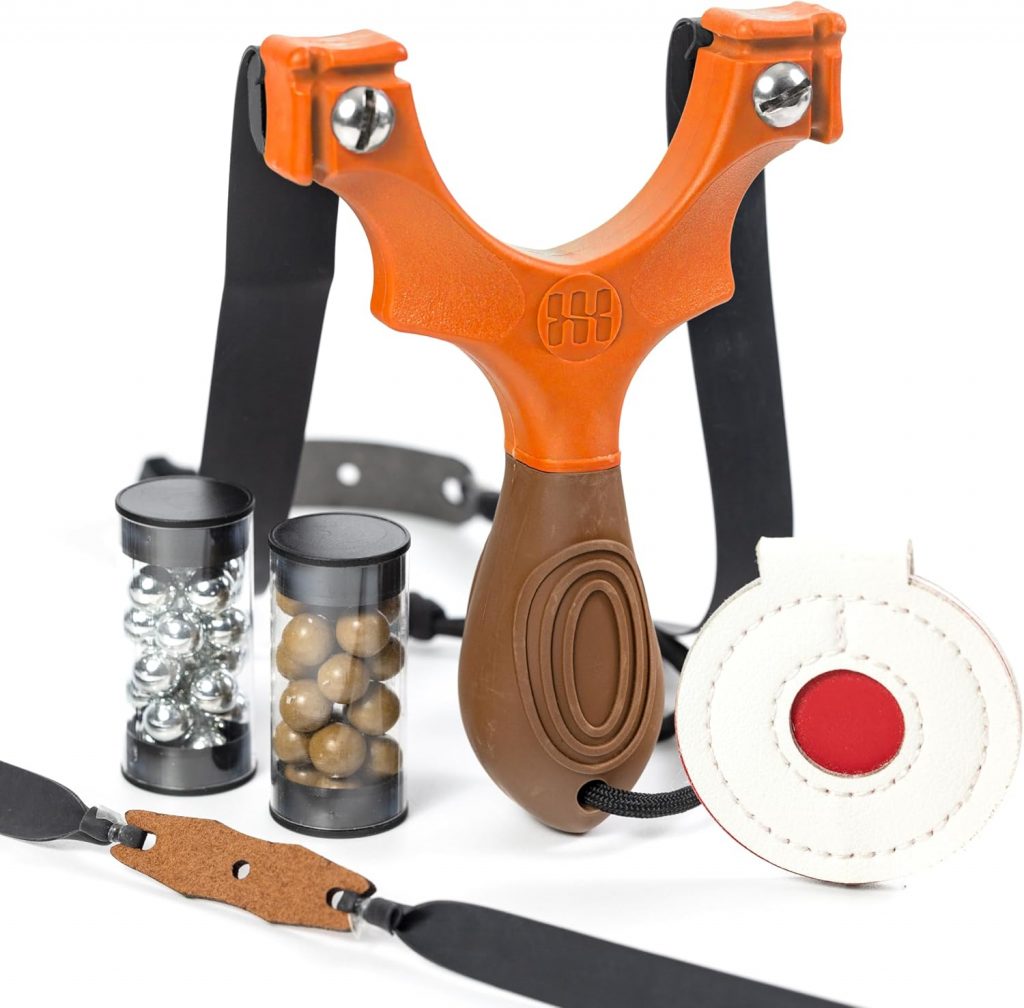
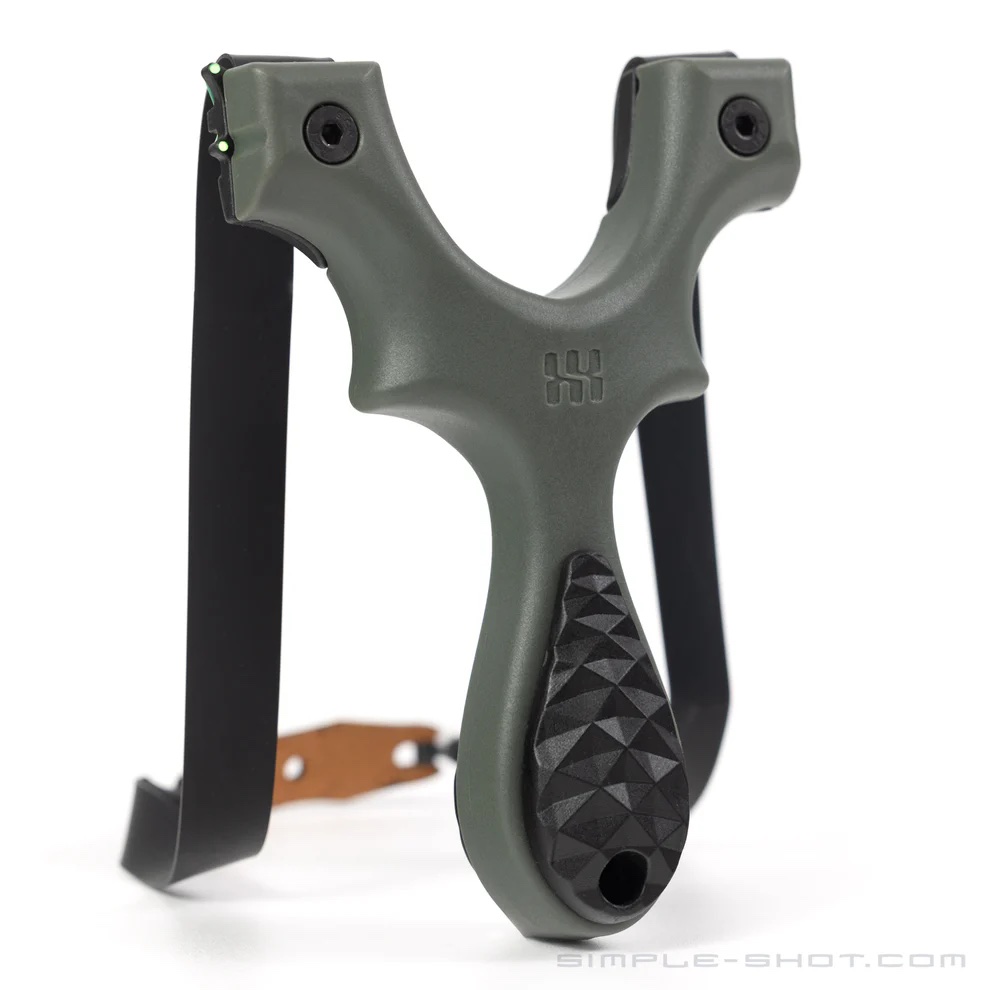
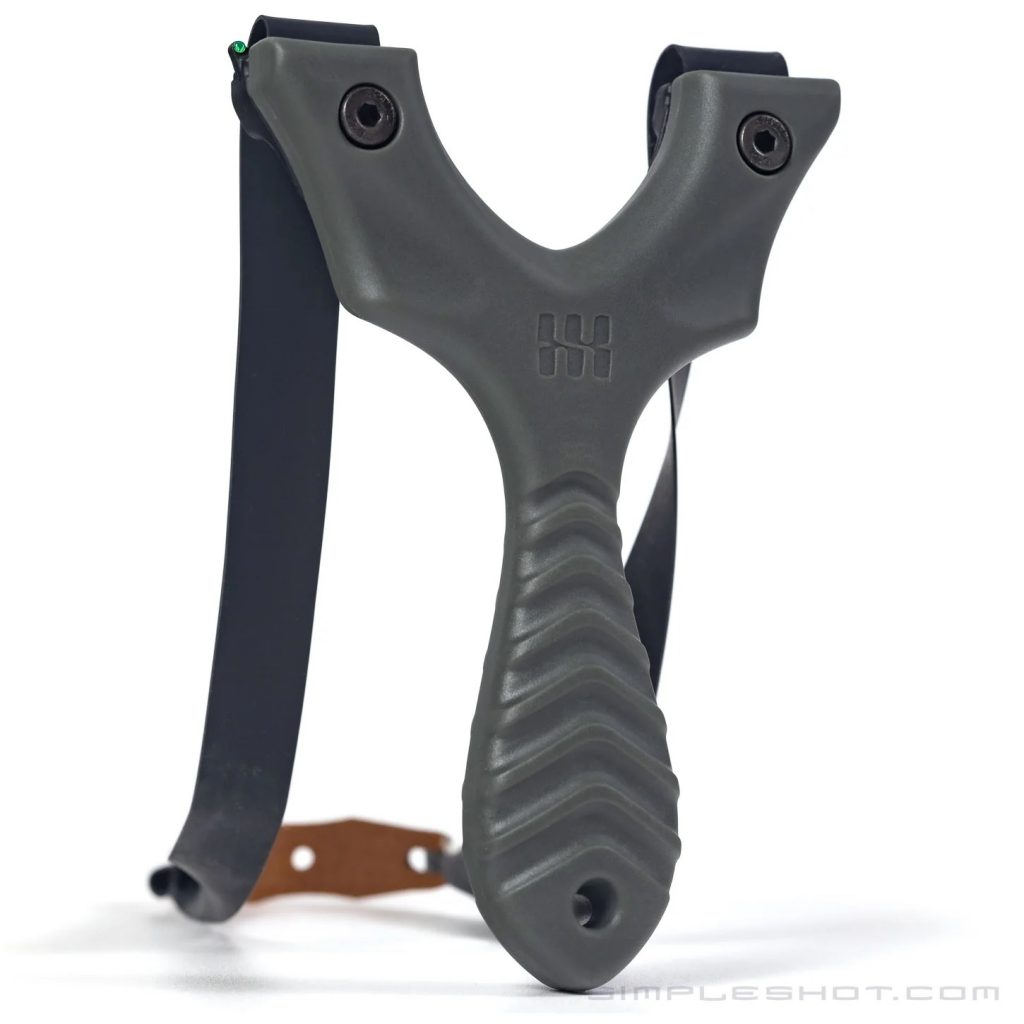
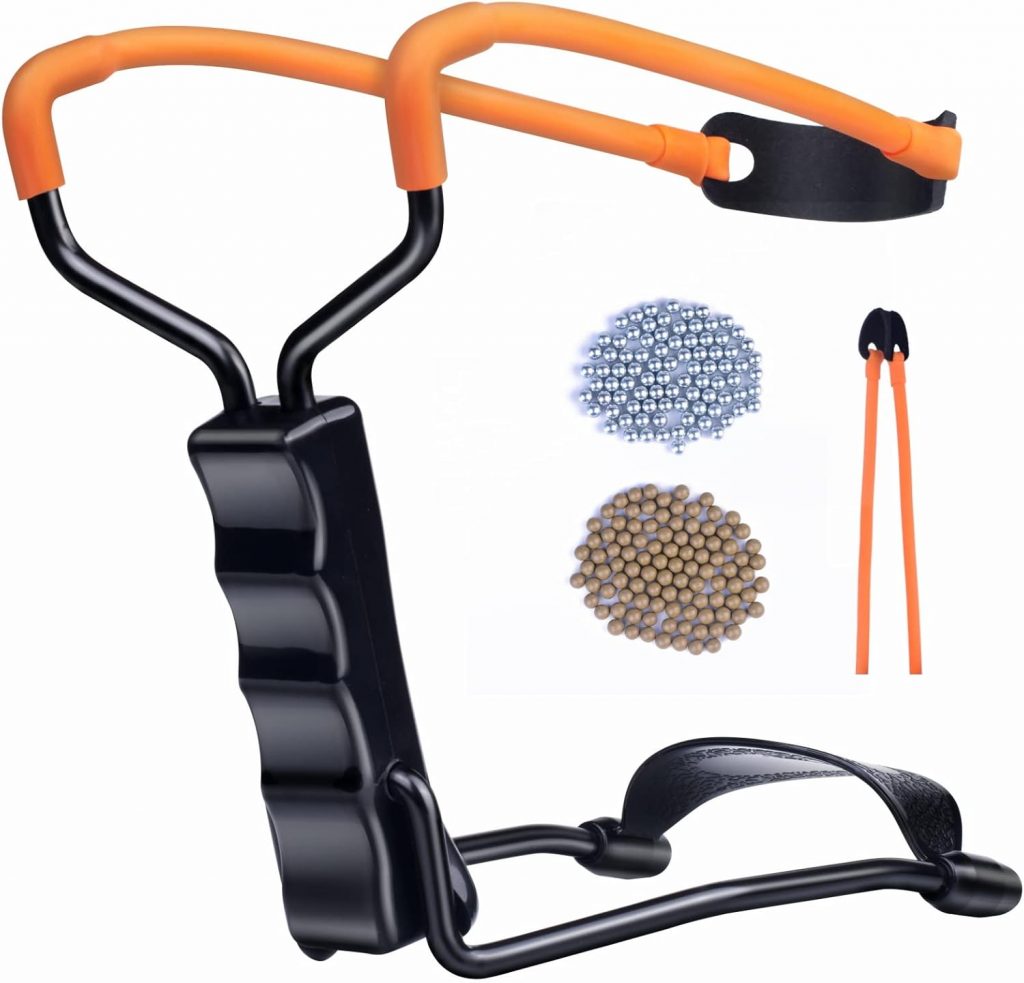

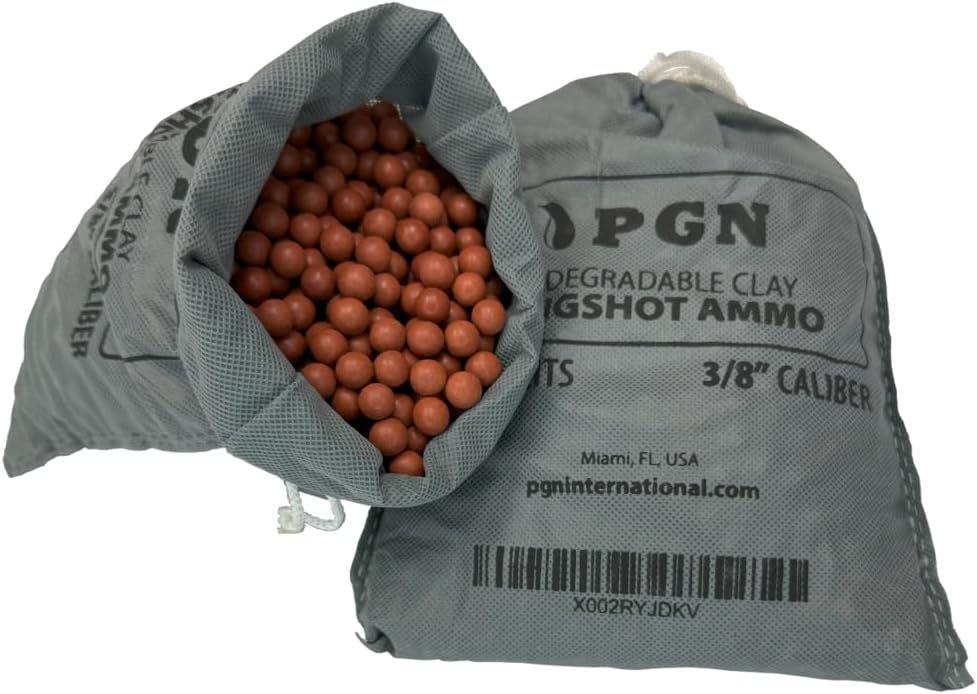
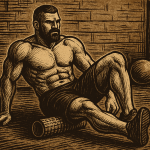




Comments by The Dapper Savage